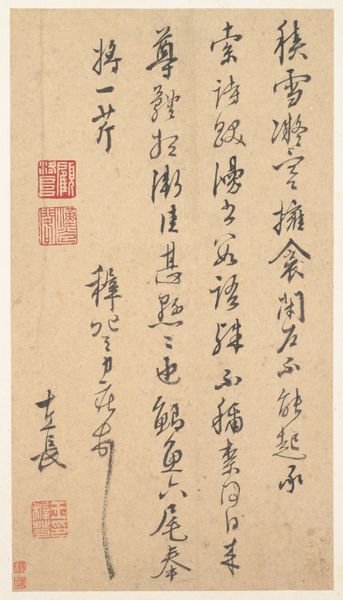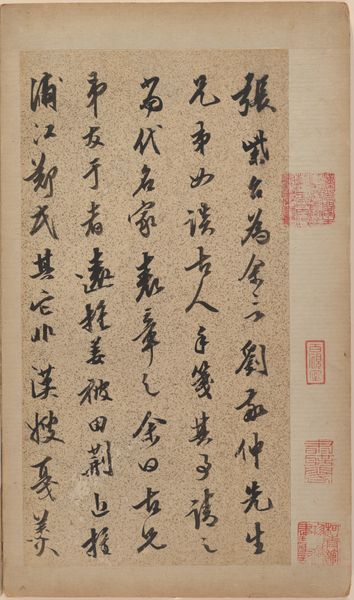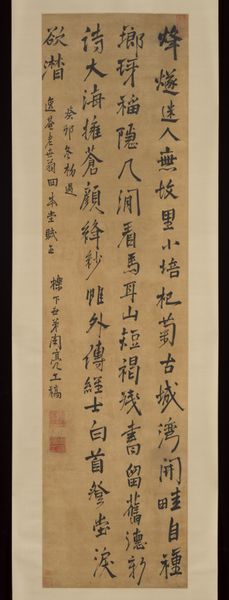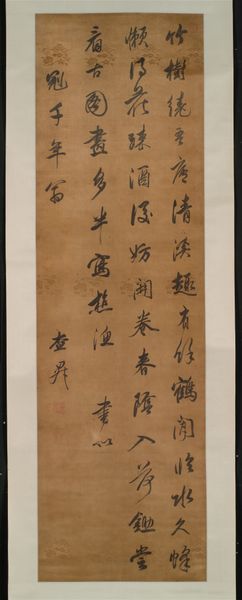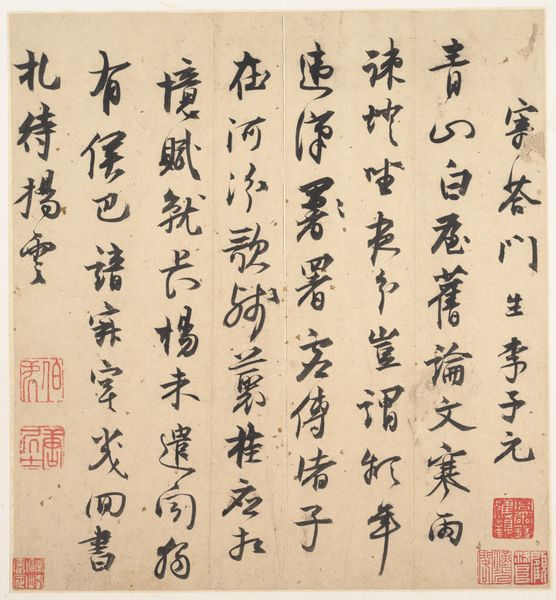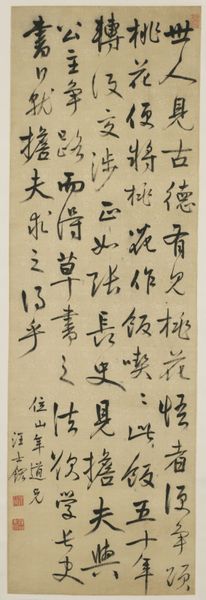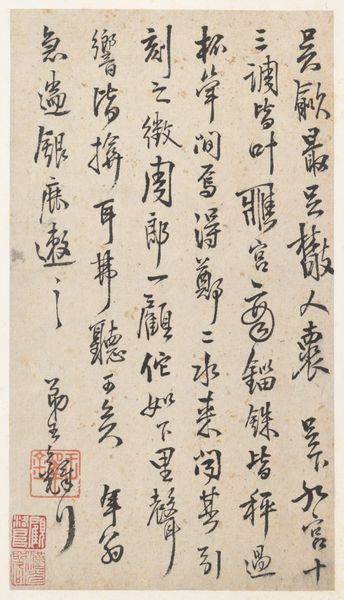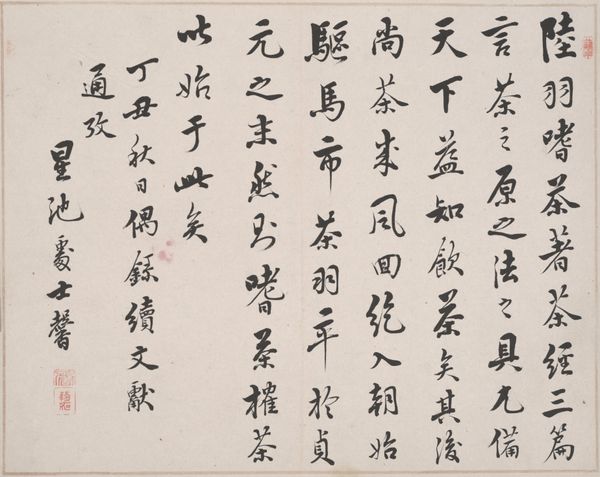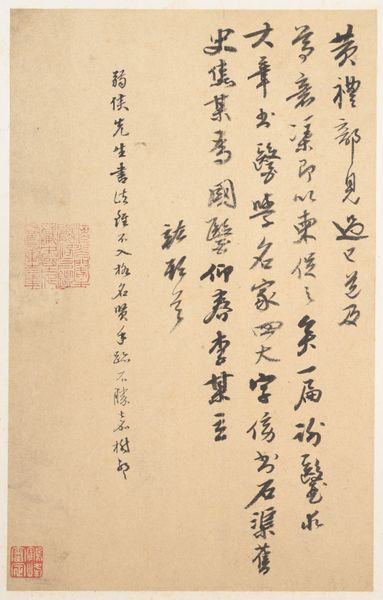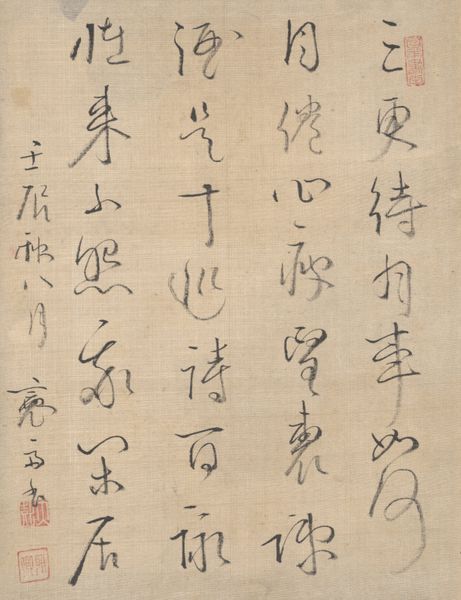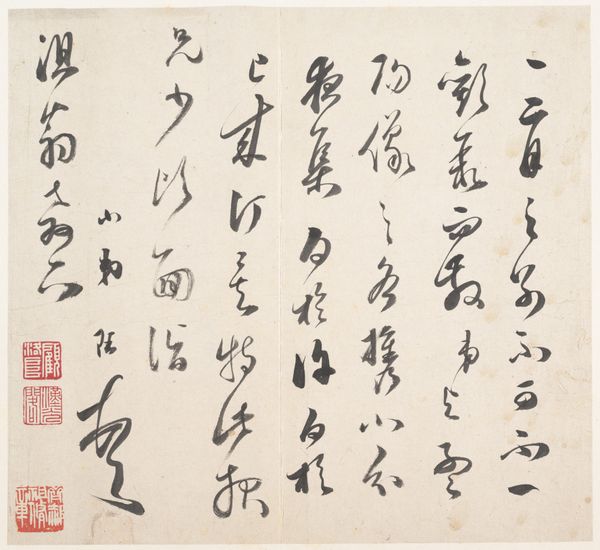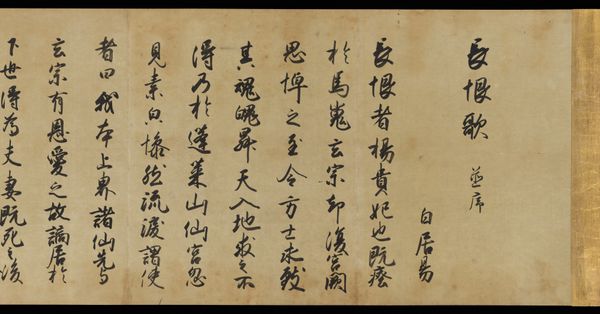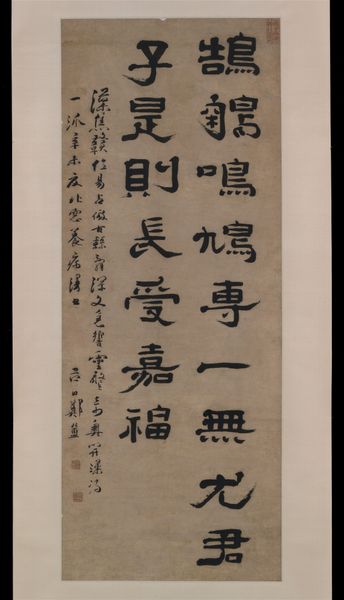
drawing, paper, ink
#
drawing
#
asian-art
#
paper
#
19_tang-dynasty-618-907
#
ink
#
calligraphy
Dimensions: Each leaf: 8 3/16 x 3 1/2 in. (20.8 x 8.9 cm)
Copyright: Public Domain
Curator: I find myself drawn to the immediacy of this ink drawing on paper, this 'Classic of Spiritual Flight.' There's a directness to the mark-making. Editor: It definitely gives off a feeling of ancient solemnity. The tight verticality and aged material—it has an undeniable presence. Curator: Created between 728 and 741 by Zhong Shaojing, in the heart of the Tang Dynasty, it showcases both calligraphy and artistic skill as part of a larger cultural conversation regarding spirituality. One can't separate its aesthetic choices from questions of religion, class, and even the role of artistic production within a highly structured society. How do you see the function of paper as a means for its production? Editor: Exactly. Look closely, and you will notice the fibers in the paper, revealing it’s creation and, to an extent, its social setting and how writing has been considered craft for the production of important narratives throughout Asian history. This wasn't just casually sketched; every element involved time and thought in choosing quality material. The texture interacts beautifully with the ink, and it reveals how both materials collaborate in conveying such ideas. What do you feel its effect on you personally? Curator: I see a strong link between calligraphic art, religious belief, and dynastic power, how writing on such delicate material became not just an act of artistic production but also an act of political statement. It gives voice to the intersectional identities involved in its making. The concept of 'spiritual flight,' encoded in the text, suggests yearning, but in relation to earthly realities as much as to spiritual concepts. What's your view on how process impacts the consumption or dissemination of such material, since most probably only had a close interaction through another person or reading? Editor: Interesting, this challenges any perception that Asian calligraphy might only be aesthetic. As an artifact, the ‘Classic of Spiritual Flight’ brings historical narratives around not only about belief systems and artistic process but also highlights social fabrics. It urges us to see the connections in every component that contributed to this artifact: culture, technique, writing. I look away from the gallery wall knowing that, while silent, it offers valuable perspective to all of its contexts and makers involved.
Comments
No comments
Be the first to comment and join the conversation on the ultimate creative platform.
